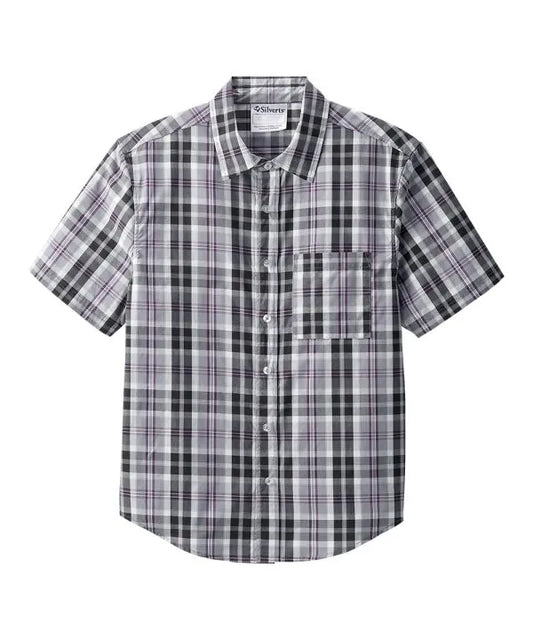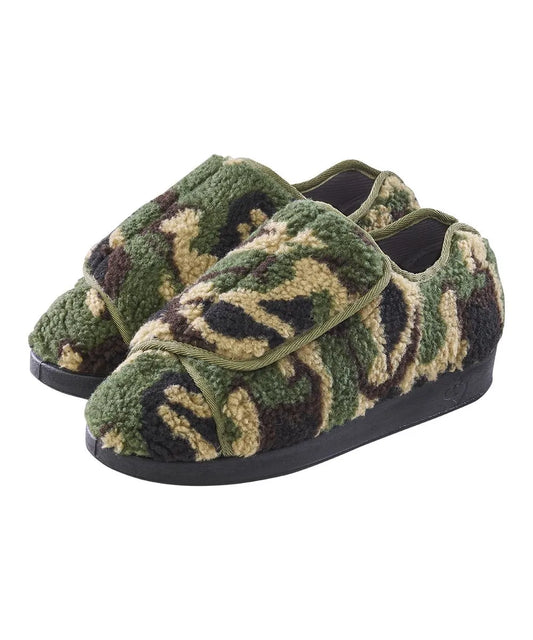Undergoing hip replacement surgery is a major step towards improving your mobility and overall quality of life. However, the recovery period can present its own unique set of challenges, including the seemingly simple task of getting dressed. In this comprehensive guide, we'll explore the process of dressing with ease after a hip replacement, highlighting seamless clothing solutions and adaptive options that can make your recovery more comfortable and manageable.
The Importance of Safe Dressing Post Hip Replacement
Hip replacement surgery is often recommended to alleviate pain and restore mobility in individuals with hip joint problems. While the procedure is highly effective, the recovery process requires careful attention to avoid any complications or discomfort. Safe and efficient dressing is one aspect of this recovery that cannot be overlooked.
Here's why it matters:
-
Minimizing Strain: During the initial recovery period, it's essential to minimize strain on the newly replaced hip joint. Any sudden or excessive movements can lead to discomfort or complications.
-
Preserving Independence: The ability to dress independently is a significant milestone in your recovery journey. Regaining this independence can boost your confidence and overall well-being.
-
Adaptive Solutions: With advancements in medical technology and clothing design, there are adaptive solutions available that can significantly simplify the dressing process and enhance your overall comfort.
In this blog post, we'll break down the dressing process into simple steps and explore adaptive clothing options that can assist you in making this daily task seamless.
Choosing the Right Clothing
One of the key aspects of dressing with ease after hip replacement is selecting the right clothing. Before delving into the step-by-step dressing guide, let's consider what you should look for in your clothing choices:
1. Front-Closure Clothing:
Clothing with front closures, such as hook-and-loop fasteners or snaps, is ideal for individuals recovering from hip replacement surgery. These front closures eliminate the need to twist or reach behind you, which can be challenging and may risk overextending your healing hip.
2. Adaptive Clothing:

3. High-Waisted Options:
Opt for high-waisted clothing that provides coverage for your surgical site, offering extra support and comfort. High-waisted garments can help reduce irritation and pressure on your incision area.
4. Stretchy Fabrics:
Choose clothing made from soft, stretchy materials that are easy to manipulate without causing discomfort. Stretchy fabrics are more forgiving and can accommodate any swelling or changes in your body shape during recovery.
Step-by-Step Guide to Dressing After Hip Replacement
Now, let's walk through the step-by-step process of putting on clothing after hip replacement surgery. These guidelines can help you regain your independence and confidence in your daily dressing routine:
1. Position Yourself:
Start by sitting down in a stable and comfortable chair or on your bed. You can use a cushion or pillow to elevate your surgical leg slightly, maintaining the correct hip angle for comfort.
2. Slide Your Leg In:
Gently slide your operated leg into the leg opening of your chosen clothing. Take your time to avoid sudden movements and to minimize any strain or discomfort.
3. Use Adaptive Fasteners:
If you've opted for adaptive clothing, take advantage of the innovative fasteners they provide. Magnetic closures, hook-and-loop fasteners, and other adaptive solutions can significantly simplify the dressing process.
4. Dress Your Non-Operated Leg:
Once your operated leg is comfortably dressed, proceed to dress your non-operated leg. Again, front-closure or adaptive clothing can be a significant help in this step.
5. Put on Tops:
When it comes to putting on tops, consider adaptive options with front closures. These can be a real time-saver and can help you dress independently.
6. Adjust as Needed:
Take a moment to ensure your clothing fits comfortably and does not bunch up or constrict. Make any necessary adjustments to achieve a snug but comfortable fit.
By following this step-by-step dressing guide and selecting appropriate clothing, you can make the process of getting dressed after hip replacement surgery much smoother and more comfortable. Regaining your independence and confidence is essential for a successful recovery.
The Benefits of Adaptive Clothing
Adaptive clothing has become a significant asset for individuals recovering from hip replacement surgery or those with limited mobility. Here are some key benefits of adaptive clothing:
1. Independence:
Adaptive clothing empowers individuals to dress independently, boosting their sense of self-sufficiency and confidence.
2. Comfort:
These garments are designed with comfort in mind, reducing irritation and pressure on surgical sites or sensitive areas.
3. Convenience:
The innovative closures and designs in adaptive clothing save time and energy during the dressing process.
4. Stylish Options:
Adaptive clothing has come a long way in terms of style and fashion. You can find adaptive options that suit your personal taste and preferences.
Finding Adaptive Clothing
Adaptive clothing is becoming more widely available, both in physical stores and online. To find adaptive clothing that suits your needs, consider the following:
1. Medical Supply Stores:
Many medical supply stores offer a range of adaptive clothing options for individuals with mobility challenges. These stores often have staff who can assist you in finding the right garments.
2. Online Retailers:
Numerous online retailers specialize in adaptive clothing. You can browse through a wide selection of styles and sizes, and read reviews from other customers to help you make informed choices.
3. Specialty Brands:
Several clothing brands are dedicated to designing adaptive clothing. These brands focus on combining fashion with functionality, creating a broad range of stylish options.
4. Consult Your Healthcare Provider:
Don't hesitate to consult your orthopedic surgeon or physical therapist for recommendations on where to find suitable adaptive clothing. They may have valuable insights or local resources to share.
Final Thoughts
Dressing with ease after hip replacement is not only possible but also essential for a smooth recovery. Selecting the right clothing, including adaptive options, can significantly improve your comfort and independence. Remember to consult with your healthcare provider for personalized guidance and recommendations, and don't hesitate to explore the world of adaptive clothing to find solutions that suit your unique needs. Your journey to improved mobility and well-being begins with the little things, like getting dressed effortlessly and confidently.
















